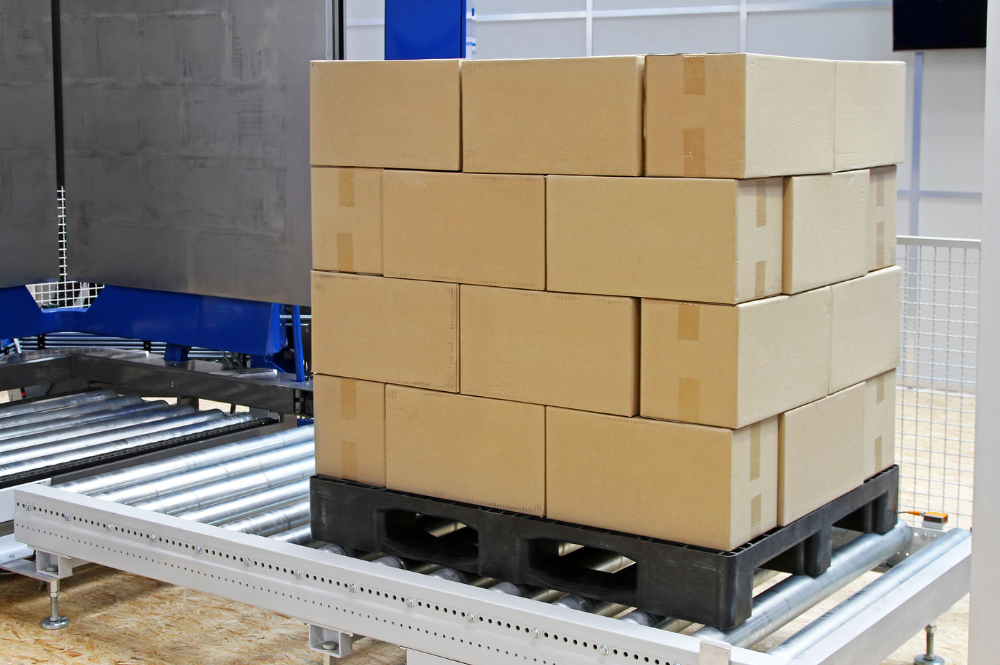In the pharmaceutical world, where safety, sterility, and precision aren’t negotiable, even something as seemingly simple as a pallet plays a critical role. Behind the scenes of vaccine distribution, diagnostic kit storage, or transporting active pharmaceutical ingredients (APIs), plastic pharmaceutical pallets act as the unsung heroes of the supply chain.
They’re not just platforms for moving products; they’re engineered tools that uphold product integrity while navigating some of the strictest hygiene and regulatory standards in the logistics industry. Understanding what makes these pallets uniquely suited for pharma applications can make all the difference in avoiding risk, damage, or costly contamination.
Let’s take a closer look at the essential traits of these specialized pallets and why durable material handling is key to pharmaceutical logistics.
The High-Stakes World of Pharmaceutical Logistics
Moving medicine isn’t like moving cereal boxes. Every shipment is sensitive, with many products requiring cleanroom compatibility or temperature-controlled environments. A cracked or splintered pallet doesn’t just delay delivery; it could compromise millions of dollars’ worth of product.
This is where pharmaceutical pallets, built with purpose-driven design, enter the conversation. Their job is to provide consistent support and unwavering reliability. Unlike standard pallets that vary in material quality, these are created for conditions that demand perfection. And at the core of that reliability is durable material handling, ensuring that the pallets can withstand repeated use without compromising performance.
A Hygienic Foundation That Holds Up
One of the standout requirements for pharmaceutical pallets is a hygienic surface. Think about the environments they enter: sterile manufacturing zones, clean storage facilities, and refrigerated trucks. A pallet that absorbs moisture or harbors bacteria simply won’t cut it.
Durable material handling comes into play here. Pallets made from non-porous plastics or advanced composites are easy to clean, won’t absorb liquids, and don’t splinter. Their smooth surfaces eliminate crevices where contaminants could hide, which is a critical feature when you’re transporting products that might be injected, inhaled, or ingested by patients.
Many pharmaceutical pallets are also compatible with standard cleaning protocols, including high-pressure washing and chemical disinfectants, without degrading over time. That means they can keep pace with demanding cleanliness requirements without becoming a weak link in the chain.
The Case Against Wood: Why Plastic Prevails
Wooden pallets might dominate general logistics, but they’re all wrong for pharmaceuticals. Wood absorbs moisture. It warps. It breaks. It’s susceptible to mold, fungi, and insects. Even treated wood can bring unpredictable variables into a tightly controlled supply chain.
Pharmaceutical pallets, by contrast, are typically crafted from robust plastic compounds. This durable material handling choice eliminates the risk of organic contamination. It also makes these pallets exempt from ISPM-15 requirements, an international standard that applies to wood packaging materials used in global trade. That means easier, safer, and smoother international shipping for pharma companies.
What’s more, plastic pallets offer uniformity. With wood, no two pallets are exactly the same. In pharmaceutical operations that rely heavily on automation, that inconsistency can throw a wrench into the gears. Plastic pallets maintain consistent dimensions and weight tolerances—an essential feature when precision matters.
Load Stability and Stackability You Can Count On
It’s easy to overlook just how vital load stability is in the pharmaceutical world. A single unstable stack could collapse in transit, leading to product loss, regulatory non-compliance, or worse, compromised patient safety.
Plastic pharmaceutical pallets are designed to distribute weight evenly and resist bending, even under heavy loads. Their structure often includes features like anti-slip surfaces, corner retainers, or integrated deck ribs. This isn’t overkill; it’s essential engineering.
In warehouse settings, these pallets also need to perform in high-racking systems and automated storage setups. Durable material handling solutions ensure these pallets won’t sag or bow after repeated cycles. Their structural integrity stands the test of time, use after use.
Sustainability Meets Performance
Sustainability is no longer a buzzword; it’s a boardroom priority. Pharmaceutical companies are under pressure to reduce waste, optimize resources, and lower their environmental impact without compromising on safety or performance.
Reusable pharmaceutical pallets check all those boxes. Thanks to their durable material handling composition, they last for hundreds of cycles. Once they’ve reached the end of their service life, many can be recycled into new pallets or other usable products.
This closed-loop system reduces reliance on disposable materials and aligns with broader corporate sustainability goals, all while keeping operations clean and compliant.
Getting It Right from the Ground Up
From cleanroom compatibility to reliable traceability, pharmaceutical pallets are designed to serve one of the most demanding industries in the world. And when those pallets are built with durable material handling in mind, the result is a supply chain that’s more resilient, hygienic, and cost-effective.
Whether you’re a pharmaceutical manufacturer, distributor, or third-party logistics provider, the right pallet choice isn’t a side decision; it’s a foundational one.
Ready to upgrade your pallet program with durable, pharma-compliant solutions? Contact B&G Industries today and let’s talk about what your operations really need.
Frequently Asked Questions
What makes a pallet suitable for pharmaceutical use?
Pharmaceutical pallets are made from hygienic, non-porous materials like plastic and designed to withstand cleaning, disinfection, and automated handling.
Can pharmaceutical pallets be reused?
Yes, especially those made from durable plastic. They’re designed for long-term use and repeated sanitation cycles without losing integrity.
Why is plastic preferred over wood in pharmaceutical logistics?
Plastic doesn’t splinter, absorb moisture, or harbor bacteria, making it safer and more compliant with pharmaceutical hygiene standards.
Are these pallets environmentally friendly?
Absolutely. Reusable plastic pallets support sustainability goals through longevity, recyclability, and a reduced need for disposable alternatives.
Are pharmaceutical pallets compatible with automation systems?
Yes. Their consistent dimensions and sturdy construction make them ideal for use in automated storage and retrieval systems.

